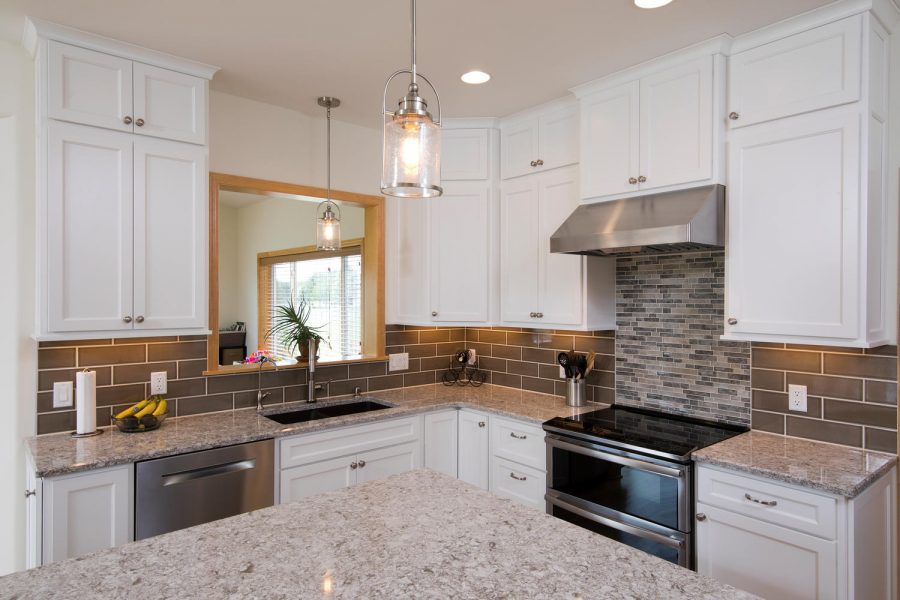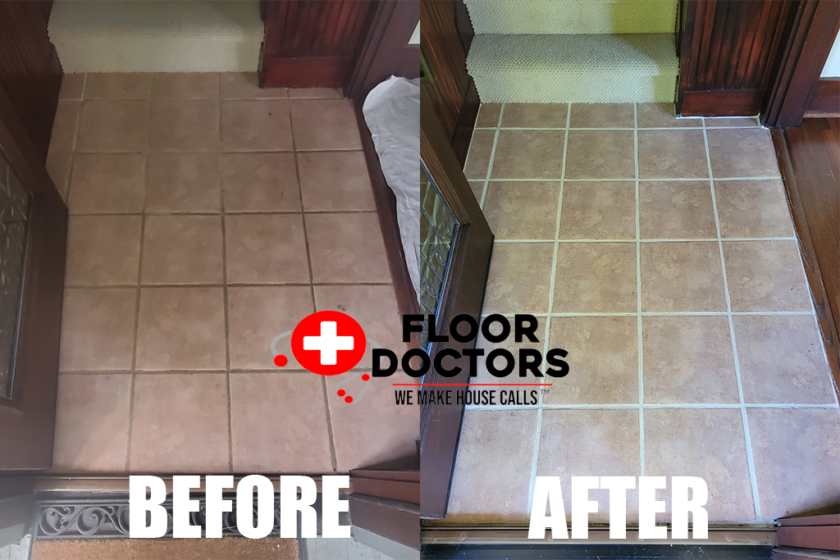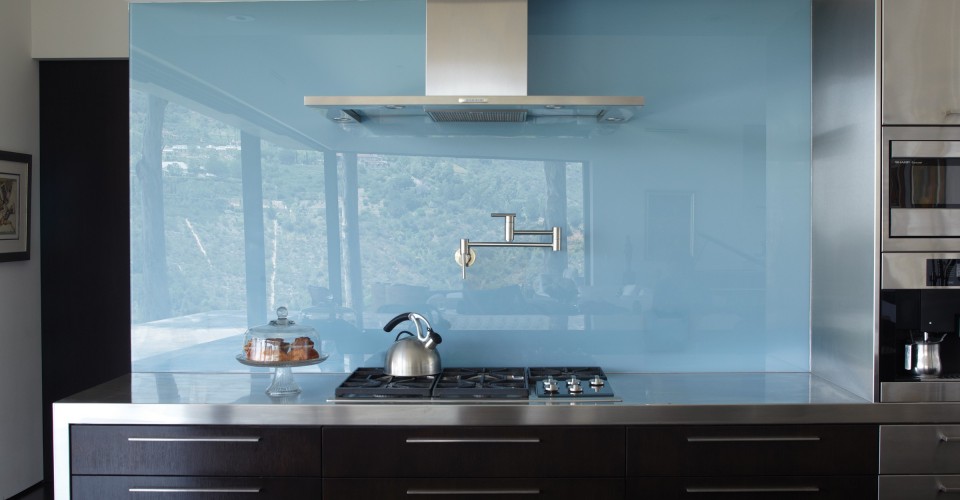The Importance of Regrouting Your Kitchen Tile Backsplash
A kitchen tile backsplash not only adds beauty and style to your kitchen, but it also serves a functional purpose by protecting your walls from water, stains, and other damage. Over time, the grout between the tiles can deteriorate, leading to a variety of issues. That’s where regrouting comes in. Let’s talk about the importance of regrouting your kitchen tile backsplash and how it can benefit you in the long run.
- Enhanced Aesthetics: When the grout between your kitchen tile backsplash starts to wear out, it can make your entire kitchen look aged and worn. Regrouting is a cost-effective way to refresh the appearance of your backsplash and restore its original beauty. By replacing the old, discolored grout with fresh, clean grout, you can instantly revitalize your kitchen and make it look as good as new.
- Prevent Water Damage: One of the primary functions of a kitchen tile backsplash is to protect the walls from water damage. As the grout ages, it becomes porous and loses its ability to repel moisture effectively. This can lead to water seeping through the grout and causing damage to the underlying structure of your kitchen walls. By regrouting your backsplash, you create a strong barrier against water infiltration, ensuring the longevity of your walls.
- Maintain Hygiene: A deteriorated grout can provide a breeding ground for mold, mildew, and bacteria, compromising the hygiene of your kitchen. These microorganisms thrive in moist environments, and the porous surface of old grout provides the perfect conditions for their growth. Regrouting your kitchen tile backsplash eliminates the hiding spots for these unwanted guests, making it easier to keep your kitchen clean and sanitary.
- Increase Durability: The grout in your kitchen tile backsplash acts as a support system, keeping the tiles in place and protecting them from shifting or cracking. Over time, as the grout weakens, the tiles may become loose or develop hairline cracks. Regrouting reinforces the structural integrity of your backsplash, ensuring that the tiles remain secure and preventing any potential damage.
- Cost-Effective Maintenance: Regrouting your kitchen tile backsplash is a cost-effective alternative to completely replacing the tiles. While a full renovation can be expensive and time-consuming, regrouting is a relatively quick and affordable solution to restore the functionality and appearance of your backsplash. It allows you to extend the lifespan of your existing tiles while still achieving a fresh and updated look.

Signs That Your Kitchen Tile Backsplash Needs Regrouting
Your kitchen tile backsplash plays a crucial role in both the functionality and aesthetics of your kitchen. Over time, the grout between the tiles can deteriorate, leading to potential issues. It is important to recognize the signs that indicate your kitchen tile backsplash needs regrouting. We will explore the common signs of deteriorated grout and how to identify them.
- Discolored Grout: One of the most obvious signs that your kitchen tile backsplash needs regrouting is discolored grout. Over time, grout can accumulate dirt, grease, and stains, causing it to lose its original color and become unsightly. If you notice that the grout has turned yellow, brown, or gray, it is a clear indication that it needs attention.
- Cracked or Crumbling Grout: As grout ages, it can become brittle and start to crack or crumble. This can happen due to various factors, including water damage, improper installation, or regular wear and tear. If you see any cracks or pieces of grout missing from the joints between the tiles, it is a sign that the grout has weakened and needs to be replaced.
- Loose or Shifting Tiles: Deteriorated grout can cause the tiles in your kitchen backsplash to become loose or shift out of place. When the grout no longer provides a secure bond between the tiles, they can become unstable and start to move. If you notice any tiles that are wobbly or have shifted from their original position, it is a clear indication that regrouting is necessary.
- Mold or Mildew Growth: The porous nature of old grout provides an ideal environment for mold and mildew to thrive. If you see black or green spots on the grout lines, it is a sign that moisture has penetrated the grout and allowed mold or mildew to grow. Not only is this unsightly, but it can also pose a health risk. If you notice any signs of mold or mildew, it is crucial to address the issue promptly by regrouting.
- Water Damage on Walls: When the grout in your kitchen tile backsplash deteriorates significantly, it can no longer effectively repel water. This can lead to water seeping through the grout and causing damage to the underlying walls. If you notice any water stains, peeling paint, or soft spots on the walls behind your backsplash, it is a clear indication that regrouting is necessary to prevent further damage.

Step-by-Step Guide to Regrouting Your Kitchen Tile Backsplash
Regrouting your kitchen tile backsplash is a DIY project that can help restore the beauty and functionality of your kitchen. While it may seem like a daunting task, following a step-by-step guide can make the process much easier. Below we provide a detailed guide to help you successfully regrout your kitchen tile backsplash.
- Gather the Necessary Tools and Materials: Before you begin regrouting, gather all the tools and materials you will need. This includes grout removal tools (such as a grout saw or rotary tool), grout mix, a grout float, a sponge, a bucket, and safety equipment (such as goggles and gloves). Having everything ready beforehand will make the process smoother.
- Remove the Old Grout: Using a grout removal tool, carefully remove the old grout from between the tiles. Be cautious not to damage the tiles in the process. Ensure that all the old grout is removed, creating clean and even grout lines. Vacuum or wipe away any dust or debris.
- Prepare the New Grout: Follow the instructions on the grout mix packaging to prepare the new grout. Mix it to a smooth, paste-like consistency. Let the grout sit for a few minutes as recommended to allow proper hydration.
- Apply the Grout: Using a grout float, apply the prepared grout onto the tile surface, pressing it into the joints. Hold the float at a 45-degree angle and work in small sections to ensure even coverage. Remove excess grout from the tile surface using the edge of the float.
- Clean the Tiles: Once you have applied the grout, wait for about 10-15 minutes for it to set slightly. Then, using a damp sponge, gently wipe away the excess grout from the tile surface, being careful not to remove grout from the joints. Rinse the sponge frequently to keep it clean.
- Final Touches: After cleaning the tiles, allow the grout to dry according to the instructions on the packaging. Once it is fully dry, use a dry cloth to buff away any haze left on the tiles. Finally, apply a grout sealer to protect the grout and enhance its longevity.

Choosing the Right Grout for Your Kitchen Tile Backsplash
Choosing the right grout for your kitchen tile backsplash is essential for both its appearance and durability. With various types of grout available, it’s important to understand the options and select the one that best suits your needs. Let’s discuss the factors to consider when choosing grout for your kitchen tile backsplash.
Type of Grout: There are three main types of grout: cement-based, epoxy-based, and urethane-based. Cement-based grout is the most common and cost-effective option. It is suitable for most kitchen tile backsplashes and offers a wide range of color choices. Epoxy-based grout is highly durable, stain-resistant, and water-resistant, making it ideal for areas prone to moisture and stains. Urethane-based grout is similar to epoxy-based grout but offers more flexibility and is easier to work with.
Color Selection: The color of the grout can significantly impact the overall look of your kitchen tile backsplash. You can choose a grout color that matches the tiles for a seamless appearance or opt for a contrasting color to create a unique design element. Keep in mind that lighter grout colors may require more maintenance to keep them looking clean, while darker grout colors can hide dirt and stains better.
Size of Grout Joints: Consider the size of the grout joints between your tiles when selecting grout. Cement-based grout is suitable for joints up to 1/8 inch wide, while epoxy-based grout can be used for joints as narrow as 1/16 inch. If you have larger joints, consider using sanded grout, which contains sand particles to add strength and prevent cracking.
Maintenance and Durability: Think about the maintenance requirements and durability of the grout. Epoxy-based and urethane-based grouts are more resistant to stains, mold, and mildew, making them easier to clean and maintain. Cement-based grout may require periodic sealing to protect it from stains and moisture.
Application Method: Consider the application method when choosing grout. Some grouts come in pre-mixed form, while others require mixing with water. Pre-mixed grouts are convenient and save time, but if you opt for a powdered grout, ensure you follow the mixing instructions accurately to achieve the desired consistency.
Professional Advice: If you are unsure about which grout to choose, consult with a professional tile installer or a knowledgeable salesperson at a tile or home improvement store. They can provide expert advice based on your specific requirements and help you make an informed decision.

Tips for Choosing Kitchen Backsplash Tile – The Cabinet Store

Update your kitchen with a tile backsplash. Learn how to do it yourself! A Kitchen To Dine For

Tile Regrouting – Floor Doctors – Tile & Grout Cleaning and Restoration

Best Black Grout images black grout, kitchen backsplash, kitchen tiles

How To Tile a Kitchen Backsplash: DIY Tutorial Sponsored by Wayfair

Try the Trend: Solid Glass Backsplashes

Oh What a Gem!: Adding a Tile Backsplash to the Kitchen
images about Kitchen ideas on Pinterest Contemporary kitchens, Kitchen faucets

Tile Backsplash Ideas for Behind the Range Inspiring Design Pinterest Cooking oil, Subway

Top Tile Types for Your Kitchen Backsplash

Related Posts:
- Tumbled Marble Kitchen Backsplash
- How To Paint Kitchen Backsplash
- Glass Tile Kitchen Backsplash Ideas Pictures
- Kitchen Backsplash Trends To Avoid
- Southwest Kitchen Backsplash Ideas
- Slate Kitchen Backsplash
- Orange Backsplash Kitchen
- Outdoor Kitchen Backsplash Ideas
- Kitchen Backsplash Ideas With Cherry Cabinets
- How To Install Kitchen Backsplash Video